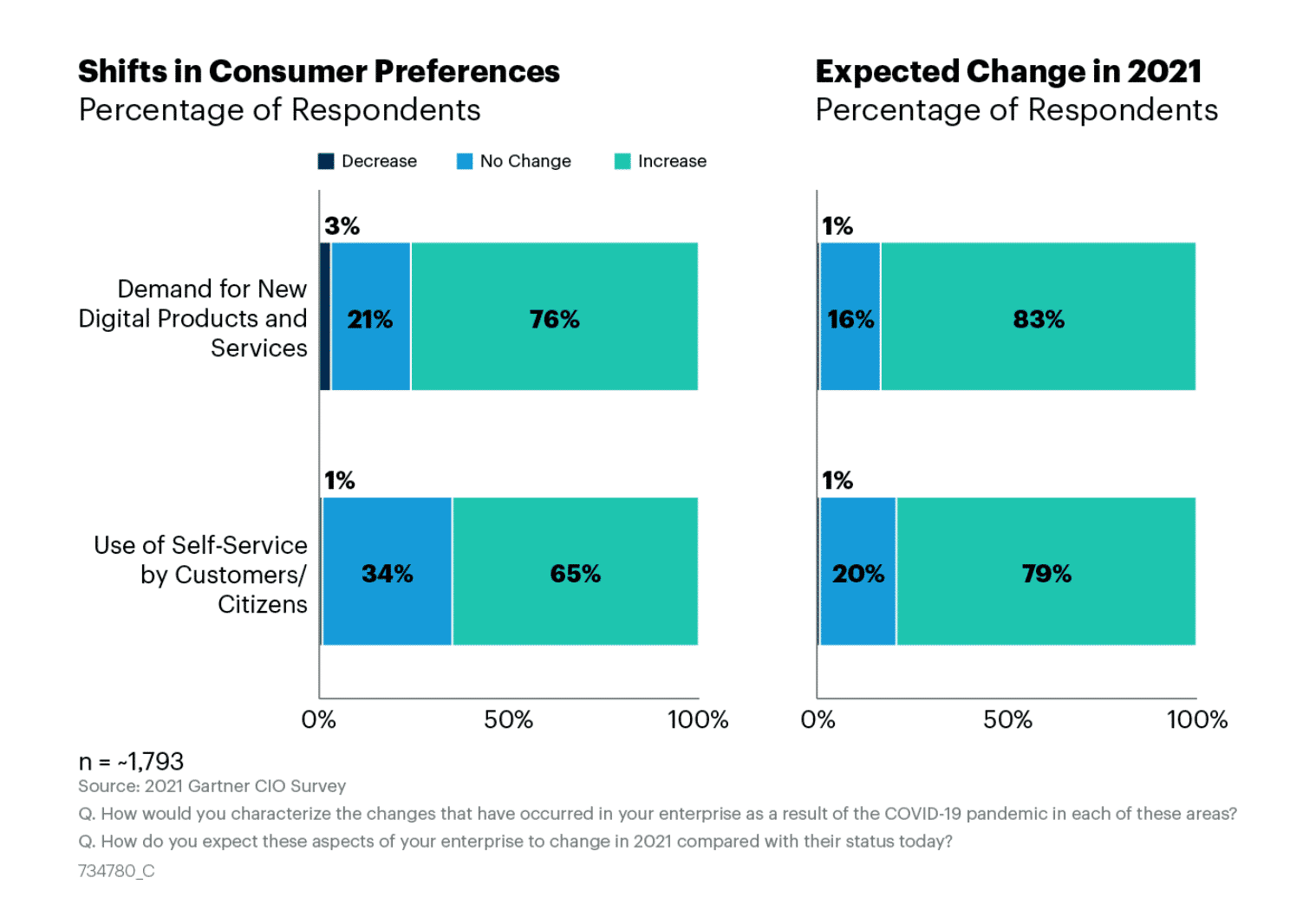In the past, CIOs were seen as the guardians of servers, implementers of software and maintainers of systems.
Today, CIOs are increasingly becoming responsible for strategic initiatives, profitability and even new product development.
The traditional CIO with a tech-heavy background was not required to take into account the business impact of IT implementations on both the top and bottom line. But this is changing… fast.
When the COVID-19 pandemic hit in early 2020, sending tech workers, teachers, engineers and more into a remote work model, the CIO’s role and responsibilities came into sharper focus. The quick pivot caught many unawares, but those who had been performing their due diligence were prepared, and are even seeing significant growth as a result of their methodical investments.
These top performers are able to seize an opportunity to lean into the shift resulting from the pandemic and increase funding for digital innovation. They invested more quickly, and those investments mattered. Organizations that increased funding of digital innovation are 2.7 times more [1] likely to be a top performer than a trailing one.
A recent Gartner report[2] states 76% percent of CIOs reported increased demand for new digital products [3] and services as a result of COVID-19 and 83% expect that to increase further in 2021, according to the Gartner CIO Agenda 2021. Along the same line, 65% of CIOs saw an increase in the use of self-service by customers/citizens, and 79% expect that usage to grow in 2021.
